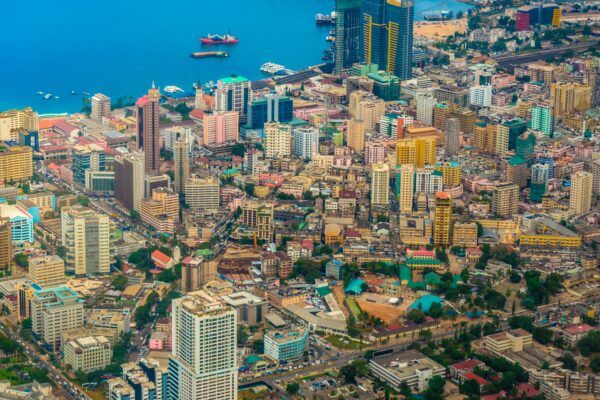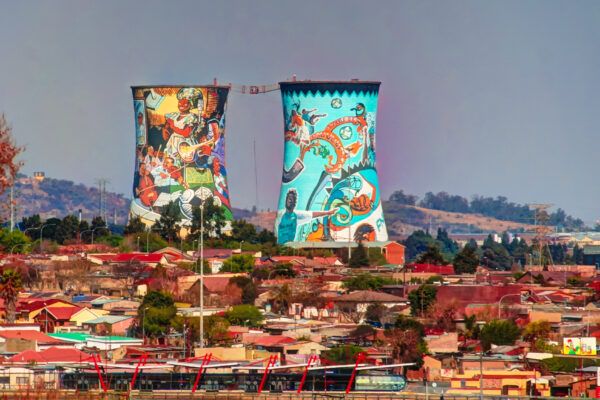Since the launch of C40’s Clean Air Accelerator in October 2019, this statement of political leadership has brought together diverse cities to take action across sectors to tackle greenhouse gas emissions, air pollutants and inequities in cities. To date, 49 cities across 6 continents have joined.
Mayors that signed the C40 Clean Air Accelerator recognise that breathing clean air is a human right. They are now working together in an unparalleled global coalition for clean air to create healthy, resilient and equitable cities.
The latest update of the WHO Air Quality Guidelines in 2021 provides clear evidence of the need to tackle emissions as soon as possible, to reduce the impacts of air pollution on residents. Cities can achieve the most health, economic and social benefits by building equity into the planning and implementation of actions. It’s crucial to prioritise measures that tackle the exposure of residents most impacted by air pollution (systematically marginalised and clinically vulnerable communities).
C40 Clean Air Accelerator signatories are taking an integrated approach to reduce air pollution with actions tackling emissions across a range of sectors:
1. Boosting air quality monitoring
Cities are following an evidence-based approach to implementing transformational changes. To do so, they are expanding their air quality monitoring networks to collect, analyse and communicate data about the air we breathe and the health impacts of air pollution.
For instance, in September 2022, Bogotá launched their collaborative network of air quality microsensors, which will collect valuable information on top of their well established air quality monitoring network. Bogotá will deploy more than 200 microsensors in the next three years. In the same month, Quezon City completed the expansion of its monitoring network with the deployment of 12 additional non-reference sensors. This year, the city will add 10 more sensors, making it the largest air quality monitoring network in the Philippines.
2. Implementing Low Emission Zones
Transformative actions like Low Emission Zones and Zero Emission Areas bring large health and well-being benefits to residents. These zones give public space back to residents and nature by reclaiming streets to create more liveable communities. These people-centred interventions better connect residents to their jobs, schools, leisure, and their loved ones. By facilitating active mobility and sustainable transport options, urban air quality is improved.
Cities like London have proved the impact of these actions: the Ultra Low Emission Zone (ULEZ) has contributed to an almost 50% reduction in toxic Nitrogen Dioxide pollution in central London. The ULEZ will be expanded across all London boroughs on 29 August 2023, bringing clean air to 5 million more people.
3. Enabling active mobility and greening spaces
Many cities are also working to promote active mobility to create a healthier, greener, fairer and safer public space that promotes social relations and local economy. The Superblock programme in Barcelona is transforming the entire city’s street model by pedestrianising one out of three streets. Many cities are also expanding their cycle infrastructure: cycle lanes in Buenos Aires now total 267 km, while Paris is implementing a new bicycle plan to become a 100% bikeable city by 2026.
Cities are also expanding green cover in cities. By planting more trees and creating green areas, cities are adapting to the impacts of pollution and the climate crisis, while making it easier for residents to walk and cycle across the city. Two examples are, Sydney’s Greening Strategy and the city of Guadalajara that planted 22,000 endemic trees in 2022.
4. Electrifying public transport
Expansion and electrification of mass transit is also a key step to reduce air pollution in cities. Bengaluru continues to extend its metro network and has increased the number of electric buses with 75 already operating and another 921 coming. Delhi is also currently working to electrify 80% of its bus fleet. The city already has 300 electric buses and is planning to introduce 8,000 electric buses by 2025.
5. Phasing out dirty fuels for warming
Cities are also tackling air pollution and greenhouse gas emissions by working to phase out the use of fossil and solid fuels for heating. Warsaw has established a ban on burning coal to take effect in 2023, while Seoul and Washington D.C. implemented emissions standards for boilers. Cites are also phasing out old boilers:
- Warsaw eliminated 1,225 classless and low-class stoves
- Seoul deployed 61,000 domestic and 487 commercially certified “eco-friendly” boilers
- Madrid, through the Change 360 Plan, is investing €14 million between 2021 and 2023 to renew old diesel and carbon boilers.
These and other actions put signatory cities on a path to reduce their pollution levels and improve public health, equity and resilience. We look forward to seeing future progress delivered by signatory cities to meet air quality and climate goals, and we welcome other cities to join this mayoral global coalition for clean air.
Find out more about cities’ progress in C40’s report Clean Air Accelerator: How cities are cleaning the air we breathe.

